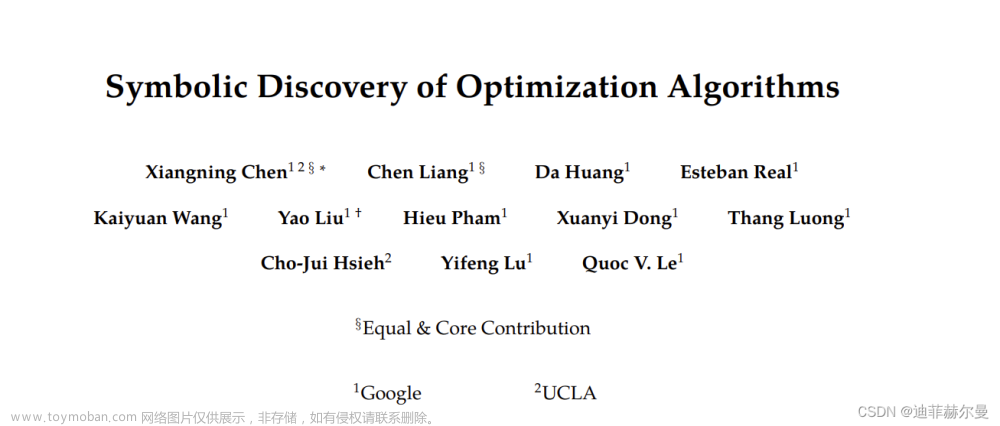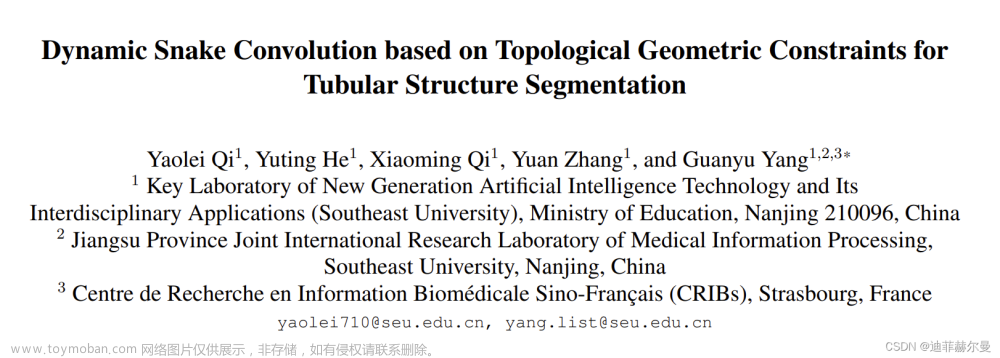YOLO系列 — YOLOV7算法(六):YOLO V7算法onnx模型部署
有很多人来问我,基于YOLO v7算法训练出来一个权重文件,如何进行部署。所以特地写一篇部署的blog~
一般,我们基于pytorch深度学习框架训练出来的权重文件是pt格式的,我们可以用python来直接调用这个文件。但是实际工业中,一般都是c++去调用权重文件的,所以我们需要将pt权重文件转换为能用c++去调用的格式。一般来说,我习惯用以下方式:
- 使用libtorch进行转换,将pt转换为torchscript.pt格式的权重文件,然后直接用官方提供的libtorch来调用
- 先将pt转换为onnx格式的权重,onnx是一种开放神经网络交换格式。然后用opencv里面的api去调用
- 同样是先转换为onnx格式的,然后用onnx runtime去调用权重文件(本篇blog使用的方法)
- 先将pt权重文件转换为tensort格式,然后用tensor去调用
ps:当然,还有很多很多支持c++调用深度学习权重文件的,这里我只是列举了我个人比较喜欢用的几种调用方式。
一、环境配置
本篇blog使用是用onnx runtime去调用onnx权重文件,然后基于visual studio来配置运行环境。我们先配置visual studio的环境,这里我们主要要配置两个外部库,一个是opencv(用于图片的读取和写入),另外一个就是onnx runtime(用于调用权重文件)。网上有很多关于该部分的讲解,我找了两个写的还不错的直接分享给大家吧:
- VisualStudio2019配置OpenCV4.1.0(opencv的版本可以随意选择,不过最好选择大于3.4.x以上的版本)
- VS2019 快速配置Onnxruntime环境
二、转换权重文件
YOLO V7项目下载路径:YOLO V7
这里值得注意,一定一定一定要下载最新的项目,我第一次下载YOLO v7的时候作者还没有解决模型export.py中的bug,导出的onnx模型没法被调用。我重新下载了最新的代码,才跑通。
简单说下export.py的几个需要修改的参数:
parser = argparse.ArgumentParser()
parser.add_argument('--weights', type=str, default='', help='weights path') #YOLO V7训练得到的pt权重文件
parser.add_argument('--img-size', nargs='+', type=int, default=[640, 640], help='image size') # 图片长宽,保持跟训练时候一致即可
parser.add_argument('--batch-size', type=int, default=1, help='batch size') #默认为1
parser.add_argument('--dynamic', action='store_true', help='dynamic ONNX axes')
parser.add_argument('--grid', action='store_true', help='export Detect() layer grid') #这个参数一定要加上去,如果不加的话默认导出onnx模型是不带最后一层Detect层的,最后结果是没办法解析出来的
parser.add_argument('--end2end', action='store_true', help='export end2end onnx')
parser.add_argument('--max-wh', type=int, default=None, help='None for tensorrt nms, int value for onnx-runtime nms')
parser.add_argument('--topk-all', type=int, default=100, help='topk objects for every images')
parser.add_argument('--iou-thres', type=float, default=0.45, help='iou threshold for NMS')
parser.add_argument('--conf-thres', type=float, default=0.25, help='conf threshold for NMS')
parser.add_argument('--device', default='cpu', help='cuda device, i.e. 0 or 0,1,2,3 or cpu')
parser.add_argument('--simplify', action='store_true', default=True, help='simplify onnx model') #在导出onnx模型的时候,是否做模型剪枝操作,建议加上,如果不加,opencv去调用onnx模型可能会出错
parser.add_argument('--include-nms', action='store_true', help='export end2end onnx')
opt = parser.parse_args()
最后,导出onnx模型,发现权重文件大小较原先pt文件减少了一倍。
三、onnx runtime调用onnx模型
代码链接:onnx runtime调用onnx模型文章来源:https://www.toymoban.com/news/detail-468727.html
#include <fstream>
#include <sstream>
#include <iostream>
#include <opencv2/imgproc.hpp>
#include <opencv2/highgui.hpp>
//#include <cuda_provider_factory.h>
#include <onnxruntime_cxx_api.h>
using namespace std;
using namespace cv;
using namespace Ort;
struct Net_config
{
float confThreshold; // Confidence threshold
float nmsThreshold; // Non-maximum suppression threshold
string modelpath;
};
typedef struct BoxInfo
{
float x1;
float y1;
float x2;
float y2;
float score;
int label;
} BoxInfo;
class YOLOV7
{
public:
YOLOV7(Net_config config);
void detect(Mat& frame);
private:
int inpWidth;
int inpHeight;
int nout;
int num_proposal;
vector<string> class_names;
int num_class;
float confThreshold;
float nmsThreshold;
vector<float> input_image_;
void normalize_(Mat img);
void nms(vector<BoxInfo>& input_boxes);
Env env = Env(ORT_LOGGING_LEVEL_ERROR, "YOLOV7");
Ort::Session* ort_session = nullptr;
SessionOptions sessionOptions = SessionOptions();
vector<char*> input_names;
vector<char*> output_names;
vector<vector<int64_t>> input_node_dims; // >=1 outputs
vector<vector<int64_t>> output_node_dims; // >=1 outputs
};
YOLOV7::YOLOV7(Net_config config)
{
this->confThreshold = config.confThreshold;
this->nmsThreshold = config.nmsThreshold;
string classesFile = ""; #coco.names路径
string model_path = config.modelpath;
std::wstring widestr = std::wstring(model_path.begin(), model_path.end());
//OrtStatus* status = OrtSessionOptionsAppendExecutionProvider_CUDA(sessionOptions, 0);
sessionOptions.SetGraphOptimizationLevel(ORT_ENABLE_BASIC);
ort_session = new Session(env, widestr.c_str(), sessionOptions);
size_t numInputNodes = ort_session->GetInputCount();
size_t numOutputNodes = ort_session->GetOutputCount();
AllocatorWithDefaultOptions allocator;
for (int i = 0; i < numInputNodes; i++)
{
input_names.push_back(ort_session->GetInputName(i, allocator));
Ort::TypeInfo input_type_info = ort_session->GetInputTypeInfo(i);
auto input_tensor_info = input_type_info.GetTensorTypeAndShapeInfo();
auto input_dims = input_tensor_info.GetShape();
input_node_dims.push_back(input_dims);
}
for (int i = 0; i < numOutputNodes; i++)
{
output_names.push_back(ort_session->GetOutputName(i, allocator));
Ort::TypeInfo output_type_info = ort_session->GetOutputTypeInfo(i);
auto output_tensor_info = output_type_info.GetTensorTypeAndShapeInfo();
auto output_dims = output_tensor_info.GetShape();
output_node_dims.push_back(output_dims);
}
this->inpHeight = input_node_dims[0][2];
this->inpWidth = input_node_dims[0][3];
this->nout = output_node_dims[0][2];
this->num_proposal = output_node_dims[0][1];
ifstream ifs(classesFile.c_str());
string line;
while (getline(ifs, line)) this->class_names.push_back(line);
this->num_class = class_names.size();
}
void YOLOV7::normalize_(Mat img)
{
// img.convertTo(img, CV_32F);
int row = img.rows;
int col = img.cols;
this->input_image_.resize(row * col * img.channels());
for (int c = 0; c < 3; c++)
{
for (int i = 0; i < row; i++)
{
for (int j = 0; j < col; j++)
{
float pix = img.ptr<uchar>(i)[j * 3 + 2 - c];
this->input_image_[c * row * col + i * col + j] = pix / 255.0;
}
}
}
}
void YOLOV7::nms(vector<BoxInfo>& input_boxes)
{
sort(input_boxes.begin(), input_boxes.end(), [](BoxInfo a, BoxInfo b) { return a.score > b.score; });
vector<float> vArea(input_boxes.size());
for (int i = 0; i < int(input_boxes.size()); ++i)
{
vArea[i] = (input_boxes.at(i).x2 - input_boxes.at(i).x1 + 1)
* (input_boxes.at(i).y2 - input_boxes.at(i).y1 + 1);
}
vector<bool> isSuppressed(input_boxes.size(), false);
for (int i = 0; i < int(input_boxes.size()); ++i)
{
if (isSuppressed[i]) { continue; }
for (int j = i + 1; j < int(input_boxes.size()); ++j)
{
if (isSuppressed[j]) { continue; }
float xx1 = (max)(input_boxes[i].x1, input_boxes[j].x1);
float yy1 = (max)(input_boxes[i].y1, input_boxes[j].y1);
float xx2 = (min)(input_boxes[i].x2, input_boxes[j].x2);
float yy2 = (min)(input_boxes[i].y2, input_boxes[j].y2);
float w = (max)(float(0), xx2 - xx1 + 1);
float h = (max)(float(0), yy2 - yy1 + 1);
float inter = w * h;
float ovr = inter / (vArea[i] + vArea[j] - inter);
if (ovr >= this->nmsThreshold)
{
isSuppressed[j] = true;
}
}
}
// return post_nms;
int idx_t = 0;
input_boxes.erase(remove_if(input_boxes.begin(), input_boxes.end(), [&idx_t, &isSuppressed](const BoxInfo& f) { return isSuppressed[idx_t++]; }), input_boxes.end());
}
void YOLOV7::detect(Mat& frame)
{
Mat dstimg;
resize(frame, dstimg, Size(this->inpWidth, this->inpHeight));
this->normalize_(dstimg);
array<int64_t, 4> input_shape_{ 1, 3, this->inpHeight, this->inpWidth };
auto allocator_info = MemoryInfo::CreateCpu(OrtDeviceAllocator, OrtMemTypeCPU);
Value input_tensor_ = Value::CreateTensor<float>(allocator_info, input_image_.data(), input_image_.size(), input_shape_.data(), input_shape_.size());
// 开始推理
vector<Value> ort_outputs = ort_session->Run(RunOptions{ nullptr }, &input_names[0], &input_tensor_, 1, output_names.data(), output_names.size());
/generate proposals
vector<BoxInfo> generate_boxes;
float ratioh = (float)frame.rows / this->inpHeight, ratiow = (float)frame.cols / this->inpWidth;
int n = 0, k = 0; ///cx,cy,w,h,box_score, class_score
const float* pdata = ort_outputs[0].GetTensorMutableData<float>();
for (n = 0; n < this->num_proposal; n++)
{
float box_score = pdata[4];
if (box_score > this->confThreshold)
{
int max_ind = 0;
float max_class_socre = 0;
for (k = 0; k < num_class; k++)
{
if (pdata[k + 5] > max_class_socre)
{
max_class_socre = pdata[k + 5];
max_ind = k;
}
}
max_class_socre *= box_score;
if (max_class_socre > this->confThreshold)
{
float cx = pdata[0] * ratiow;
float cy = pdata[1] * ratioh;
float w = pdata[2] * ratiow;
float h = pdata[3] * ratioh;
float xmin = cx - 0.5 * w;
float ymin = cy - 0.5 * h;
float xmax = cx + 0.5 * w;
float ymax = cy + 0.5 * h;
generate_boxes.push_back(BoxInfo{ xmin, ymin, xmax, ymax, max_class_socre, max_ind });
}
}
pdata += nout;
}
// Perform non maximum suppression to eliminate redundant overlapping boxes with
// lower confidences
nms(generate_boxes);
for (size_t i = 0; i < generate_boxes.size(); ++i)
{
int xmin = int(generate_boxes[i].x1);
int ymin = int(generate_boxes[i].y1);
rectangle(frame, Point(xmin, ymin), Point(int(generate_boxes[i].x2), int(generate_boxes[i].y2)), Scalar(0, 0, 255), 2);
string label = format("%.2f", generate_boxes[i].score);
label = this->class_names[generate_boxes[i].label] + ":" + label;
putText(frame, label, Point(xmin, ymin - 5), FONT_HERSHEY_SIMPLEX, 0.75, Scalar(0, 255, 0), 1);
}
}
int main()
{
Net_config YOLOV7_nets = { 0.3, 0.5, "E:/work/People_Detect/yolov7-main/models/yolov7_640x640.onnx" }; choices=["models/yolov7_640x640.onnx", "models/yolov7-tiny_640x640.onnx", "models/yolov7_736x1280.onnx", "models/yolov7-tiny_384x640.onnx", "models/yolov7_480x640.onnx", "models/yolov7_384x640.onnx", "models/yolov7-tiny_256x480.onnx", "models/yolov7-tiny_256x320.onnx", "models/yolov7_256x320.onnx", "models/yolov7-tiny_256x640.onnx", "models/yolov7_256x640.onnx", "models/yolov7-tiny_480x640.onnx", "models/yolov7-tiny_736x1280.onnx", "models/yolov7_256x480.onnx"] # onnx权重文件路径,这里只能使用上述这种命名方式,因为中间需要解析出模型的测试图片大小
YOLOV7 net(YOLOV7_nets);
string imgpath = ""; #测试图片路径
Mat srcimg = imread(imgpath);
net.detect(srcimg);
static const string kWinName = "Deep learning object detection in ONNXRuntime";
namedWindow(kWinName, WINDOW_NORMAL);
imshow(kWinName, srcimg);
waitKey(0);
destroyAllWindows();
}
上述需要修改的地方有三处:文章来源地址https://www.toymoban.com/news/detail-468727.html
- coco.names路径,在指定路径下创建(这里举个例子):
person
animal
......
- onnx权重文件路径,先将权重文件名称修改为上述方式,因为中间需要解析出模型的测试图片大小
- 测试图片路径
到了这里,关于YOLO系列 --- YOLOV7算法(六):YOLO V7算法onnx模型部署的文章就介绍完了。如果您还想了解更多内容,请在右上角搜索TOY模板网以前的文章或继续浏览下面的相关文章,希望大家以后多多支持TOY模板网!











